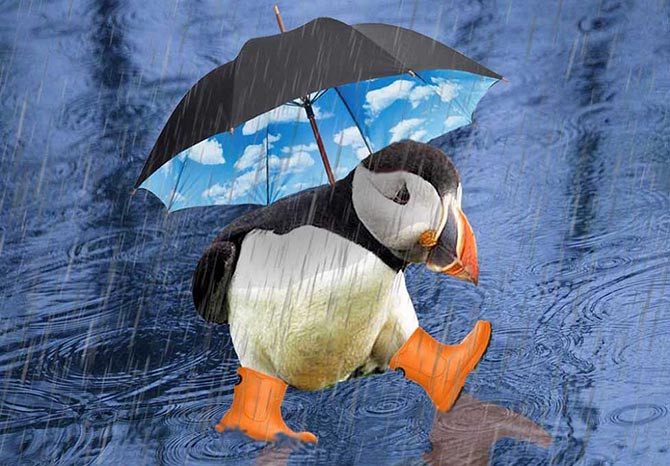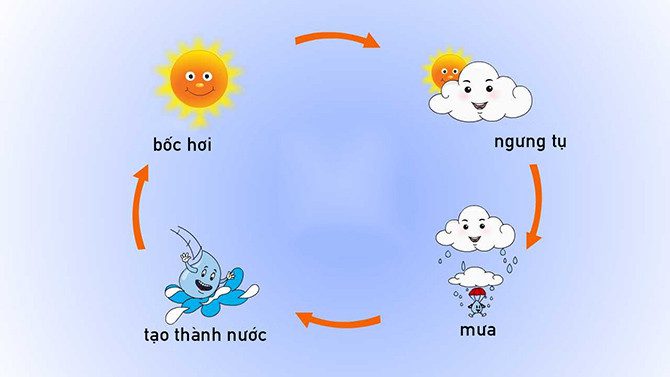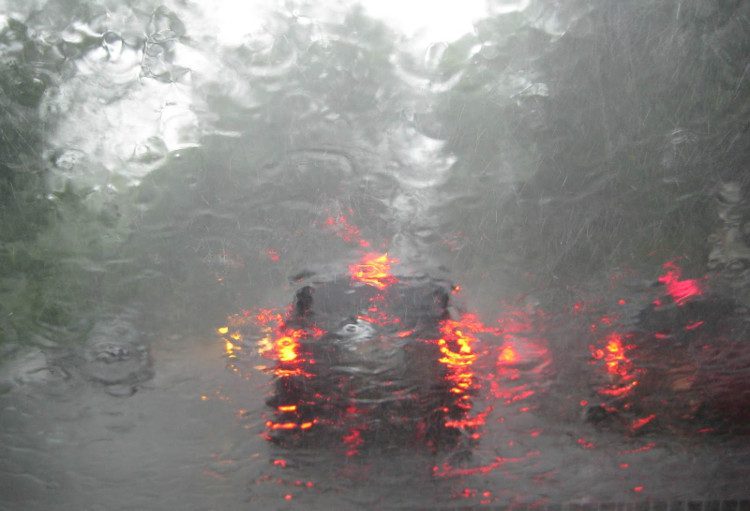In life, we will always encounter a rainstorm at one time or another. Sometimes, it may seem like the rain won’t come, but soon after, a downpour surprises us, leaving us drenched.
A few minutes earlier, all the raindrops were suspended in a distant cloud. So, why do they choose that exact moment to fall?
Well, there must be a tipping point, a moment somewhere when the mysterious raindrops are still hanging in the cloud, and then they become too heavy to stay and decide to fall to the ground.

Rain is more complex than we know.
According to ScienceABC, this is the moment when small raindrops condense and coalesce to a point where their mass is influenced by gravity. However, rain is a bit more complicated than we know…
How Do Clouds Form?
Clouds form due to water evaporating from the ground. On a warm day, with sunlight shining down on a lake all afternoon, the water in the lake heats up, eventually transforming into gas and evaporating into the atmosphere. However, at this point in the process, the rain is still in the form of tiny droplets that we cannot see.
Billions and trillions of these tiny water vapor molecules rise into the sky, forming floating clouds. The water droplets that make up the clouds may appear quite heavy, but the clouds are not dense; in fact, the volume of air in the clouds is over 1,000 times greater than the volume of all these tiny water vapor droplets.

The process of rain formation.
The warmer the air, the more water vapor evaporates. However, as the altitude increases, the surrounding air becomes cooler, causing the water vapor to revert to liquid form. Cool air cannot hold as much water vapor as warm air, and similarly, under lower air pressure, there will be less water vapor retained by the air. Thus, a phase transition occurs. However, the newly formed droplets are very small, smaller than 4-5 times the thickness of a sheet of paper.
It is much easier for water to condense on a tiny particle rather than to form naturally in the air. Therefore, if there is a large amount of dust or other particles in the air, clouds will form much more easily. Variations in terrain, atmospheric interactions, temperature, and wind can affect the type of clouds formed, but the basic process remains the same.
Warm air rises beneath extensive areas filled with enough water vapor to support clouds, which is why they “float” along with all the rain contained within them. This may seem contrary to everything learned about gravity, but you need to consider just how small these tiny water vapor droplets are, and you will understand that they float in the same way that dust particles do, continuously challenging Earth’s gravity.
Slow Down and Grow

About a million tiny water vapor droplets are needed to form an average-sized raindrop.
As the molecules become cooler, they tend to slow down. Instead of bouncing chaotically off each other or flying with the air, these tiny water vapor droplets begin to collide and stick together. You may not believe it, but it takes about a million tiny water vapor droplets like these to form an average-sized raindrop. Groups of hundreds or thousands of these tiny droplets continue to merge and grow until they reach a mass that can be affected by gravity and fall through the supporting air layer below.
Strangely, larger water droplets struggle to connect with the tiny droplets due to the strong movement of the air surrounding these interactions. In such cold atmospheric conditions at high altitudes, ice crystals often form and act as excellent catalysts for larger raindrops. The tiny water vapor droplets are always strangely attracted to the ice crystals, which can rapidly increase their weight. This may sound like it would lead to snow or hail. However, during their descent back to Earth, these ice crystals typically revert to a liquid state, also known as rain.
Does This World Need Rain?

In fact, tiny water vapor can exist in a gaseous state down to -40 degrees (both F and C).
Although many people complain about particulate matter in the air and excessive dust in certain areas, without them present in the atmosphere above, it would never rain, and quickly, this planet would become arid.
On a small scale, water vapor does not have a freezing point similar to our large-scale tangible measurements. In fact, tiny water vapor can exist in a gaseous state down to -40 degrees (both F and C). This threshold is quite cold and usually only occurs at higher altitudes than where clouds form. Fortunately, thanks to the particles and dust in our air, these ice crystals and larger water droplets can form at higher temperatures (for example, -10 degrees Celsius).
So, the next time you see a truck kicking up a lot of dust into the air, don’t be annoyed. As you just learned, this helps ensure that we continue to receive the refreshing rains that bring life to Earth from above.





















































